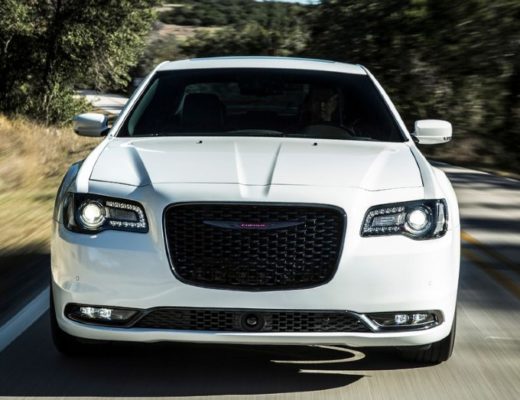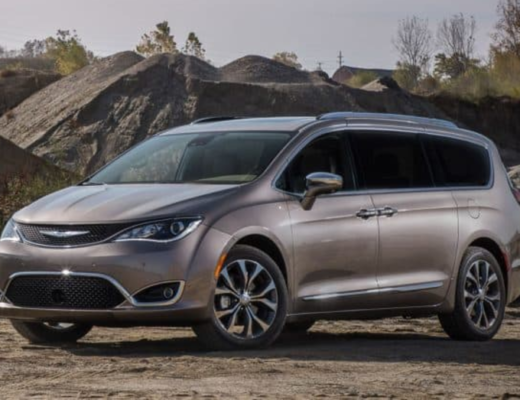The question of where Chrysler went wrong can be traced back to a time of a merger and brought forward to today.
In the current market, Chrysler is only one brand in the FCA family, and it’s a brand that has very few vehicles to offer. In fact, the brand is down to three models, with two of them being minivans and one being a full-size sedan. That doesn’t sound like much in a world where SUVs are the vehicles of choice instead of other models, but somehow, Chrysler is hanging on by these three thin threads.
Let Go Back a Few Years…
There was a time when the Chrysler name was one of the biggest prizes in the automotive industry. This company was the most profitable in the world with revenues at an all-time high, and both Jeep and Dodge were under the Chrysler umbrella. At the time of this profit, this company had $7.5 billion in cash on hand, and the company was in control of 23 percent of the market share in the US. Then the unthinkable happened, this company entered a merger with Daimler, which pushed the Chrysler name into a virtual tailspin.
Everything Was About Integration
Under the Daimler leadership, the competitive advantage that had been part of the Chrysler story was quickly gone. Everything about the Daimler plan had to do with consolidation, which destroyed the progress that had been made. Even though these two organizations were supposed to work together and be partners in the automotive world, it seemed that nothing could be done without a battle that was as close to a civil war as we find in the automotive industry. Let’s cover some of the highlights of the failure of this situation that was supposed to be two companies working together to grow.
Expectations that Were Betrayed
Communication between these two companies was difficult right from the start. What was supposed to be a merger of equals turned to be something that was not the case at all. Eventually, Jurgen Schrempp, CEO of Chrysler, was quoted in Financial Times as being only a mere “PR device.” This quote shed light on the fact that Daimler intended the deal to be an acquisition right from the start, which certainly told the world more about the rift between these two companies.
Leadership was Lacking from the Top Down
If the two heads of an organization can’t seem to get along, how can the other managers and functional leaders be expected to work together?
Many of the key operational and integration issues were filled with delays, ambiguity, and failures by leadership to provide directional guidance. No matter where they turned, many of the middle managers and functional leaders of the Daimler-Chrysler organization had no idea what they could do and how they could move forward.
Cultural Differences Were Too Great
The Daimler leadership team came to Detroit and started to take over at the Chrysler headquarters right away. At a time when America was moving toward fewer buildings that would allow smoking indoors, this team from Europe chose to take drastic measures, which were just the tip of the cultural iceberg. The Daimler leaders ripped out the smoke detectors on the executive floor of the headquarters, which had been recently installed, so they could smoke cigars while drinking red wine in the evenings.
The Best Leaders Left
Three years before the “merger,” Chrysler had been named “Company of the Year” by Fortune magazine, and they had a dream team of executives that were responsible for the success.
Not long after the merger, this entire team of leaders had either been forced out or left on their own, which left the Daimler team in charge of the fate of what had been one of the most profitable companies in the world.
The Money and Market Share Were Gone
By the time 2001 rolled around, Chrysler was losing $3 billion annually, and it was being crushed in the US market by 40 percent when compared to some of the other brands in the market. The movements that had been made over time to put Chrysler in the unique position to showcase the best product development process and time from concept to showroom, which was less than any other company. When 2001 came around, these things were all but gone. By 2007, Daimler practically paid Cerebus CapitalManagement to take Chrysler, even though all of the failures were the fault of the stubborn Daimler team.
What We See Today
Today, the Chrysler name is the middle part of FCA which is owned by Fiat, and the brand is simply one small part of the mix. We have the three vehicles offered, which are great for families to enjoy but don’t give us much at all. This brand is now on the same level as Ram, Jeep, and Dodge, which were once under the Chrysler umbrella and not part of the Fiat brand family.
What are the three models offered?
Chrysler Pacifica
The Pacifica has been known as one of the most advanced minivans in the market, and it helped to make this class of vehicle more engaging and impressive once again. This van came in as the first hybrid model in the market, and it has been a popular choice for families.
Chrysler Voyager
Last year, the Pacifica name was split into a couple of models, with the Voyager being the second of these two. The Voyager took the bottom two trims while the Pacifica retained the upper trims to give shoppers a couple of choices.
Chrysler 300
Don’t expect to see the Chrysler 300 in the market much longer. This venerable full-size sedan with plenty of room and comfort will likely be deleted from the market very soon. This car is still one that you can choose when you want five seats of comfort for you to enjoy a drive with your family or friends.
This post may contain affiliate links. Meaning a commission is given should you decide to make a purchase through these links, at no cost to you. All products shown are researched and tested to give an accurate review for you.




